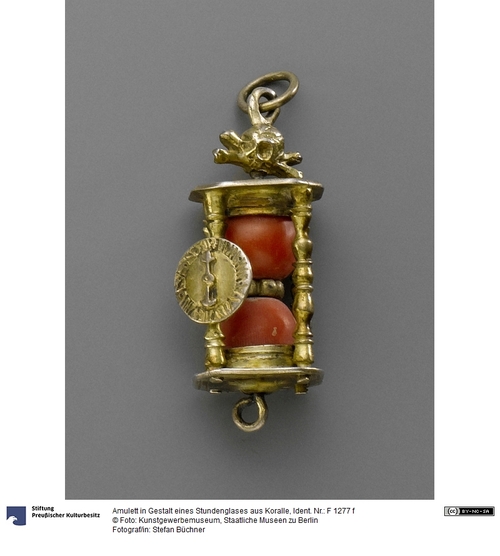Das zur Gestaltungs des Stundenglases als Vanitas-Symbol verwendete Naturmaterial der Edelkoralle (Corallium rubrum) besaß magische Bedeutung. Die vor allem im zentralen und westlichen Mittelmeer sowie an den benachbarten Küsten des östlichen Atlantik lebende rote Korallenart galt bereits im Alten Ägypten als Apotropaion. Die griechische Mythologie sah in Korallen die im Meer versteinerten Blutstropfen der Gorgo Medusa, die sie vergoss, als ihr Perseus das Haupt abschlug. Die damit verbundene Vorstellung, Korallen würden alles Unheil durch den Bösen Blick abwehren, war bis in die Neuzeit hinein weit verbreitet. LL
Entstehungsort stilistisch: Deutschland
en

